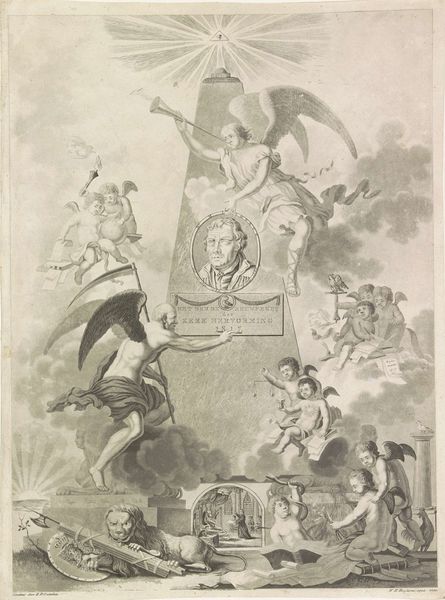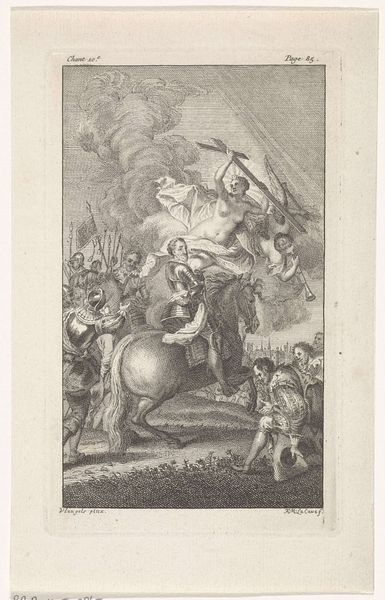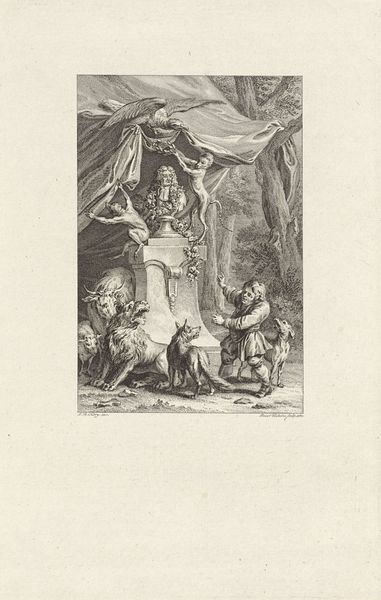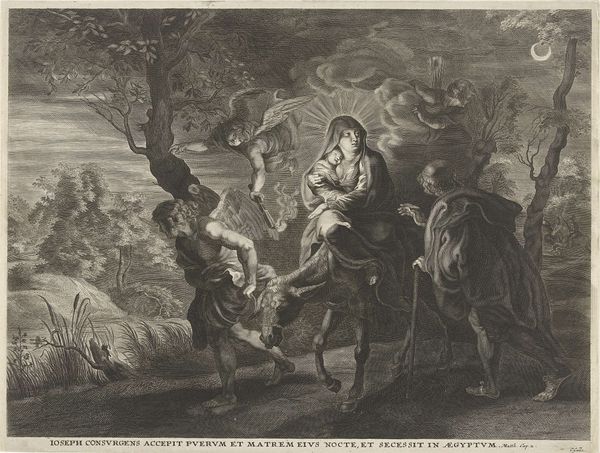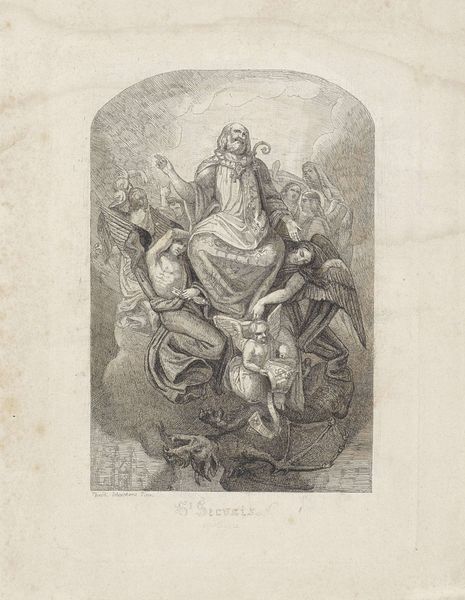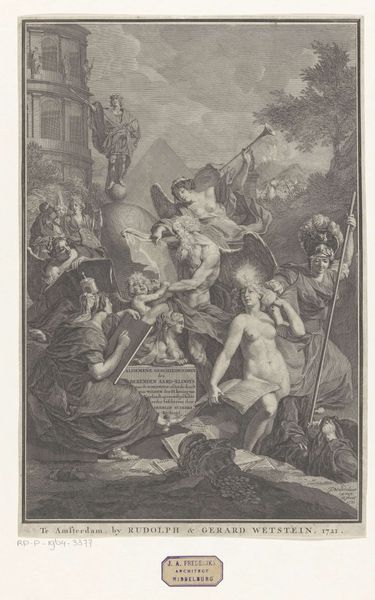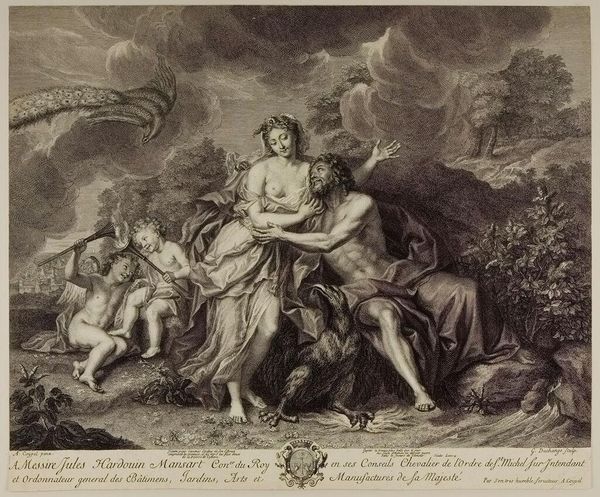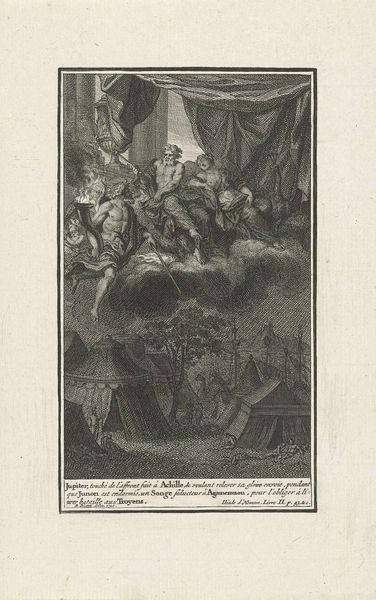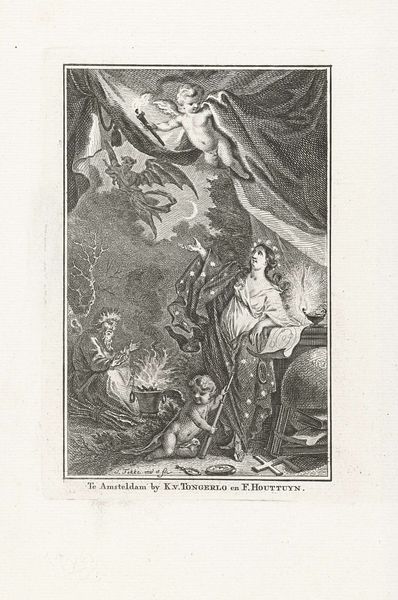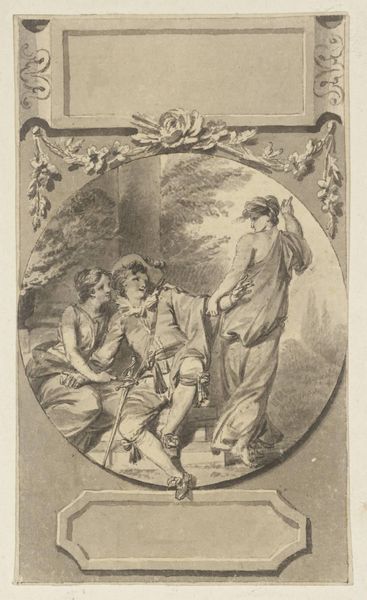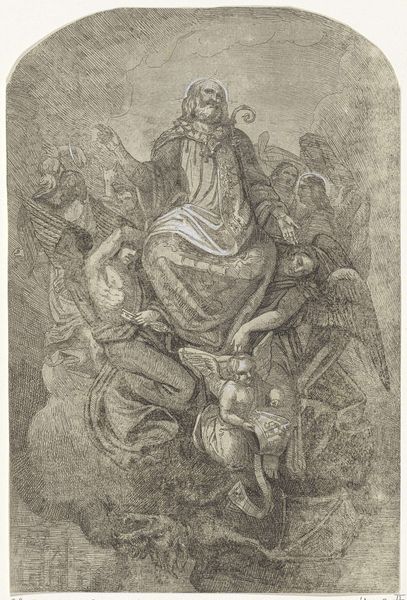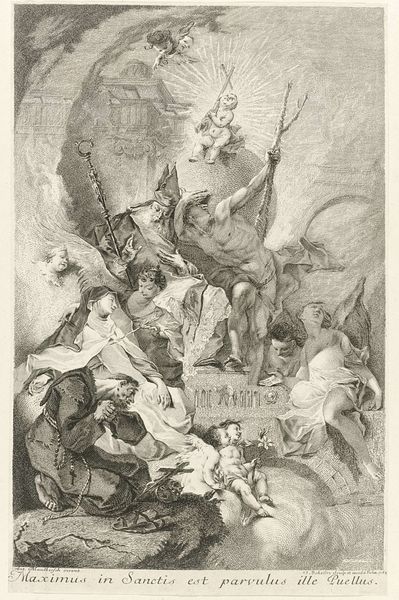
Dimensions: height 296 mm, width 260 mm
Copyright: Rijks Museum: Open Domain
Curator: Welcome. We're standing before Theodoor Schaepkens’ "Apotheosis of a Poet," an etching dating from sometime between 1825 and 1883, part of the Rijksmuseum collection. Editor: My first impression is one of gentle ascent—a floating figure surrounded by cherubic forms. The greyscale etching gives the scene a dreamlike, almost ethereal quality. Curator: Precisely. The print uses line and tone masterfully, creating a subtle interplay of light and shadow. Note the positioning of the poet, elevated and centrally located, further emphasizing his idealized status. This deliberate compositional choice guides our eyes and informs our reading of the work. Editor: While you highlight the structural elements, I’m more drawn to what this "apotheosis" signifies within the broader societal context. Apotheosis often served to sanctify the achievements of political figures and the cultural elite. Who was this poet? And whose vision of artistic merit is being promoted here? Were marginalized voices and perspectives considered equal? Curator: Your questions invite an investigation of power structures inherent in artistic representations, but focusing on the etching itself, consider how the delicate lines, the calculated arrangements, and the subject are integral. This interplay creates a visual poem, a commentary of artistry itself. Editor: Agreed. It does draw from Romantic sensibilities: glorifying artistic endeavor through a classical visual language, angelic beings included. One wonders what type of poetry was favored, which national and ethnic identities informed whose literary art became worthy of idealization during that particular era. What can we infer of colonial influences on the poet figure or the artist? Curator: Whether allegorical figures, poetic meaning or otherwise, "Apotheosis of a Poet” stands out for its controlled line work that captures light, which suggests enlightenment and ascension. The tonal gradations enhance this impression. It is these pictorial devices, how Schaepkens balances forms to express an elevated message, that speak to this etching's power. Editor: Through its graceful form, we have identified cultural questions, as well as the societal ideals upheld during the period of the Dutch Kingdom. It invites speculation, discussion, even discomfort, as we look at the elevation of select men of letters and explore what biases or social commentaries remain hidden within those delicate etched lines.
Comments
No comments
Be the first to comment and join the conversation on the ultimate creative platform.
